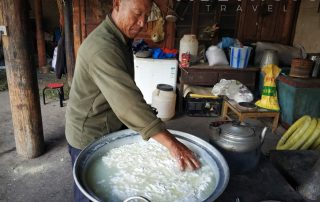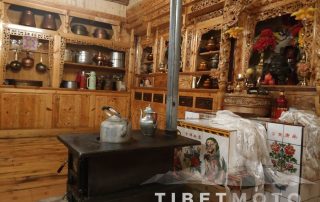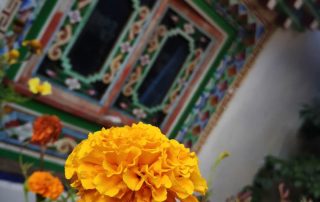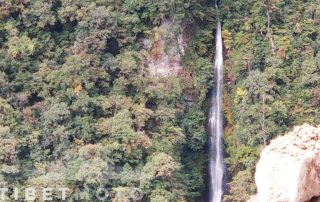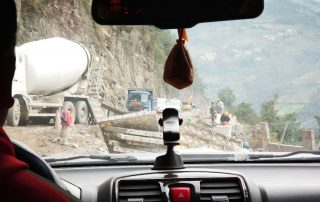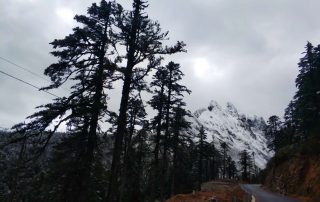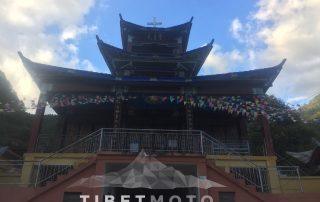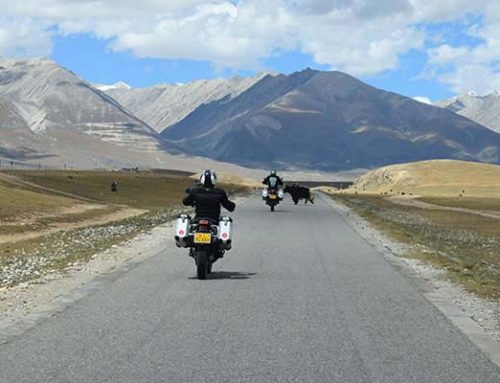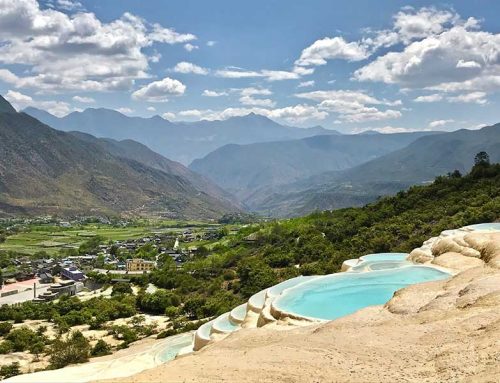A few days of Exploration in Nujiang Valley
Here we are for a few days in jiabe in the Tibetan family of Chucuo. The village is really hard to find for someone who does not know where to look. It is a small village built between mountains a few kilometers after Deqin. The houses here have an architecture different from those that can be seen to Shangrila. I find them just as beautiful! They are less imposing and the fully wooded interior makes the atmosphere naturally warm. This house is a perfect invitation to rest. We eat so well! Chucuo family’s has their own field where they grow all kinds of vegetables. Every morning we eat freshly prepared babas accompanied by honey (home-made) and fermented vegetables. Without forgetting, of course, Tibetan tea, made of Yak milk and butter! We will not be starved here. No worries to have!
Here we are for a few days in Jiabe in the Tibetan family of Chucuo. The village is really hard to find for someone who does not know where to look. It is a small village built between mountains a few kilometers after Deqin. The houses here have an architecture different from those that can be seen to Shangrila. I find them just as beautiful! They are less imposing and the fully wooded interior makes the atmosphere naturally warm. This house is a perfect invitation to rest. We eat so well! Chucuo family’s has their own field where they grow all kinds of vegetables. Every morning we eat freshly prepared babas accompanied by honey (home-made) and fermented vegetables. Without forgetting, of course, Tibetan tea, made of Yak milk and butter! We will not be starved here. No worries to have!
After these few days we wanted to venture into the mystic Nujiang Valley (salouen in Chinese). This river literally means in Chinese “the river angry”. This region of three parallel rivers is part of the UNESCO World Heritage. In this region of the world the Yangtze, Mekong and Salouen (Nujiang) flow in parallel and it is.According to UNESCO a place that “probably has the richest biodiversity of all the temperate zones of the planet”
We go on an adventure at the third border of Myanmar and Tibet, really deep into China. We want to explore this mysterious valley. We had a lot of police checks this sensitive area. They must have been wondering what strangers could do here! The road we expected to find and face the reality made us a shock! As the photos show, the vast majority of this trip was not on proper road. The road is under construction on all sides. And I hope that the next time I go back it will be over. Muds, truck, rocks falling… added the grain of adventure that was missing.
So yes, a memorable and chaotic road but the landscapes are breathtakingly beautiful! We start on a typical landscape of Tibetan plateaus (arid and dry) and climb to reach a pass at 3800m. There we are captivated by the scenery in front of us. A mountainous landscape. The snowy peaks and majestic mountain Meili … The color transition is beautiful. At the bottom of the valley, we can see lush trees with autumnal colors and little by little this green is sprinkled with snow to see more and more scattered and white trees, for finally only to see steep peaks. Not to mention karst peaks and red sandstone mountains (Danxia) … I am amazed at what nature can offer us. It is so beautiful. I never thought i could see as much different landscapes by traveling so short distance.
We move slowly but surely on this winding and slippery path and arrive in nujiang valley. It is in this remote place of China that the minorities Lisu, Nu and Dulong live. I find the houses of Lisu full of charm. These are small wooden houses that remind me of the comforting warmth of the cottages that we can see at home. But unfortunately this romantic idea that I made myself is not really the reality. It is a rather poor minority that lives simply. These people who live on the steep slopes of mountains are full of merits … I can not imagine doing that every time I want to go home! Along the way we see on the flanks of the valley opposite some scattered villages that also remind me of the Laos villages. Very simple huts surrounded by an invading jungle.
We discovered a beautiful village of the Nu ethnic group, very close to the Tibetan border. A village that still seems preserved and is not distorted by government building … We stopped in the small village, near pengdang to stretch our legs and especially restore us. We found few small shops selling the necessary to survive (toilet paper, chips, instant noodles …) but mostly one or two small restaurants.
We discovered a beautiful village of the Nu ethnic group, very close to the Tibetan border. A village that still seems preserved and is not distorted by government building … We stopped in the small village, near pengdang to stretch our legs and especially restore us. We found few small shops selling the necessary to survive (toilet paper, chips, instant noodles …) but mostly one or two small restaurants.
In almost all the villages that we crossed on this road there was a church. Catholicism was introduced to this end of the world in the 19th century by French and Swiss missionaries.
That’s how we get to BingZhongLuo, a tiny town surrounded by high mountains. The city is located mainly from a main street and some small parallels. Farmers in the region come to sell their vegetables or make their purchases of the week. It is the last village in China before officially entering in Tibetan territory …We wanted to visit the Puhua Tibetan Temple but the road being very slippery we could not access it. There is also a cellar not far from BingZhongLuo where the Nu people once a year come to celebrate the memory of their heroine. It’s really hidden and overgrown with plants. Gongshan is a city without much interest. We spent the night but if it was again I think we will stay in BingZhongLuo which has a lot more charm! You can visit a church of the 19th century.
To get to Dulongjiang it took us a few more hours. The road was not in better shape than the rest of our trip. The landscapes just as impressive … We met in the street a Dulong woman with a tattooed face. It is a tradition that is not done now, but at the time teenage girls Dulong had their faces tattooed. It was a sign of belonging to their clan. There are lovely walks to do in the area, although we did not have the time. The next time without fail .. It is already time to return to our homestay in Jiabe, this little scouting trip was really pleasant!.
I can not wait to return.


